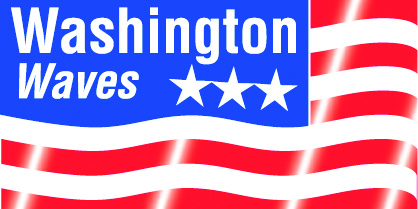Washington, D.C.—More than 50 members of Congress, including Senate leaders from both parties and other key lawmakers, have called on the U.S. Army Corps of Engineers to fund Upper Mississippi River water infrastructure projects.
“Our nation’s water infrastructure plays a critical role in maintaining our competitiveness in the global economy by ensuring the safest, least expensive, most environmentally friendly and most efficient movement of goods to market,” the bipartisan, bicameral group said in a letter to the agency’s top civilian and military leaders. “But the current backlog of outstanding water infrastructure projects pending before the Corps is putting that competitiveness at risk.”
Sent to R.D. James, assistant secretary of the Army for Civil Works, and Lt. Gen. Scott Spellmon, chief of engineers and commanding general of the Corps, the letter asked the agency to include construction funding for the Navigation and Ecosystem Sustainability Program (NESP) in the Fiscal Year 2021 Work Plan and take the next step toward lock modernization and ecosystem restoration to strengthen water infrastructure along the Upper Mississippi and Illinois rivers.
“As this infrastructure continues to age (currently well past its intended lifetime), the risk of catastrophic failure grows,” the letter warned.
Signers of the letter included Sens. Dick Durbin (D-Ill.), Democratic whip; Roy Blunt (R-Mo.), chairman of the Senate Republican Policy Committee; nine other senators; Reps. Collin Peterson (D-Minn.), chairman of the House Agriculture Committee; Sam Graves (R-Mo.); ranking member of the House Transportation and Infrastructure Committee; and 39 other House members.
Statements of support came from Tracy Zea, president and CEO of Waterways Council Inc.; Bobby Frederick, vice president of Legislative Affairs and Public Policy for the National Grain and Feed Association; John Linder, president of the National Corn Growers Association; and Bill Gordon, president of the American Soybean Association.
Lame Duck Relief
With talks failing to produce another coronavirus relief package before the election, both President Donald Trump and House Speaker Nancy Pelosi (D-Calif.) expressed confidence on reaching a compromise after Congress returns for a lame duck session.
“After the election, we›ll get the best stimulus package you’ve ever seen,” the president told reporters.
Trump then upped that ante by also predicting Republicans will not only keep the White House and the Senate but flip the House.
Despite the president’s bet against her own political fortunes, Pelosi was brief in explaining her confidence on getting a deal in November.
”The president has said that he would,” she told MSNBC.
Levee Safety Program
The National Waterways Conference Inc. (NWC) said the U.S. Army Corps of Engineers (USACE) has released an updated draft version of the Levee Safety Program, Engineering Circular (EC).
In a news alert, NWC explained the revised EC addressed comments received on the version released in February to lay out the roles of both the non-federal sponsor and the USACE on levee safety.
“As a result of these concerns, USACE removed the detailed procedures that were included in the last draft,” NWC stated.
“Instead, the agency will use Standard Operating Procedures in conjunction with this EC.”
Describing the EC as “a living, breathing document that will evolve with time,” the NWC said USACE continues to meet with non-federal partners and stakeholders and welcomes feedback on the newest version of the EC.
To schedule a meeting with USACE or to submit comments, NWC suggests emailing the agency at EC218@usace.army.mil.
N.C. Marine Highway Project
Transportation Secretary Elaine Chao announced the designation of the North Carolina Ferry System as a Marine Highway Project, the first for the Tar Heel state.
“This historic designation will enhance the ability of the North Carolina Ferry System to connect communities and promote economic growth with an efficient, effective and sustainable water-based transportation option,” Chao said.
According to her agency, the designation allows the ferry system to be used as an alternate option to traditional transportation methods and to apply for federal funding.
The century-old ferry system is located on the M-95 Marine Highway route and connects eastern North Carolina to rural communities of the Outer Banks’ barrier islands.
It is the second largest ferry system in the nation and annually transports 800,000 vehicles along seven routes.




